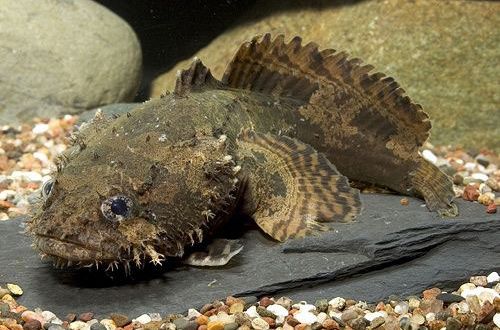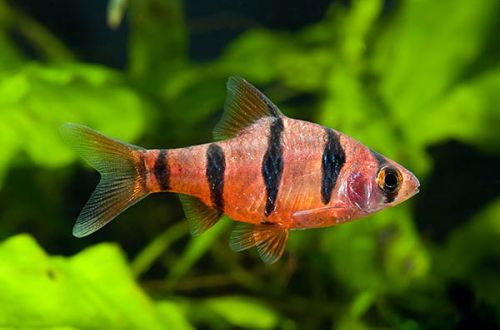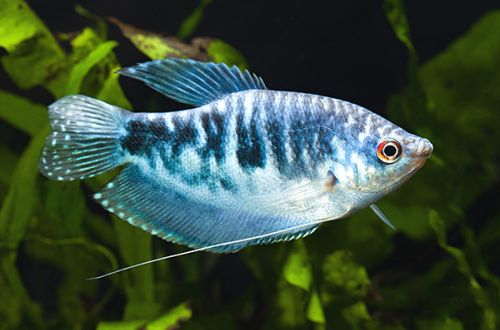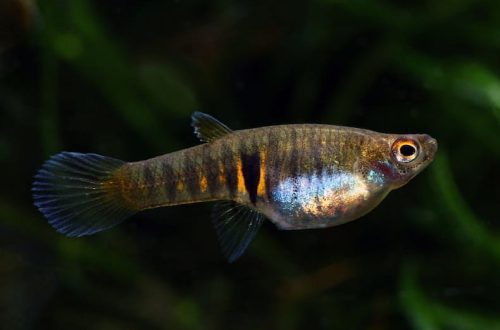
Fish Toad
The three-spined toadfish, scientific name Batrachomoeus trispinosus, belongs to the Batrachoididae family. The appearance of this fish can be surprising because of the huge head and “incomprehensible” growths. But it is this feature that attracts lovers of exotic species. In addition, it is easy to keep and peaceful in relation to other species, although it is a predator.

Contents
Habitat
Native to the Indo-Pacific region, its range extends from Australia in the south to Thailand in the north. They live in coastal waters, mangrove estuaries, in the lower reaches of rivers flowing into the sea. The natural environment is characterized by soft silted substrates and an abundance of shelters in the form of snags and roots. The bottom, as a rule, is littered with various plant remains and other organic matter.
Brief information:
- The volume of the aquarium – from 300 liters.
- Water and air temperature – 22-28°C
- Value pH — 7.8–8.5
- Water hardness – medium to high hardness (15-35 dGH)
- Substrate type – sandy, silty
- Lighting – moderate
- Brackish water – yes, in a concentration of 5-20 grams. per 1 liter of water
- Water movement – weak, moderate
- The size of the fish is about 30 cm.
- Nutrition – meat feed
- Temperament – peaceful
- Single content
- Life expectancy about 20 years
Description
Adult individuals reach a length of up to 30 cm, and a third of the body is the head, covered with numerous growths. The pectoral fins are large and designed not only for swimming, but also serve as limbs for moving along the soft bottom. The tail is small, rounded. The dorsal fin is divided into two and stretches like a crest all over the body. The color is uneven dark brown. Sharp spikes are hidden in the skin, with which the fish bristles in case of danger.
Such an unusual appearance serves one purpose – to disguise itself as a stone overgrown with algae or any other lump.
Food
Relying on its camouflage, the Three-spined Toadfish can stay motionless for long periods of time waiting for nearby prey. If the victim is too close, then a lightning reaction will follow and it will be swallowed.
In the wild, the diet is very diverse and consists of fish, crabs, shrimp, octopus, bivalves, snails, sea urchins and polychaete worms. In a home aquarium, it will accept bloodworms, earthworms, fish meat (for example, ordinary pollock from a store) and shrimp.
The frequency of meals is 1-2 times a week, which is quite enough and correlates with the diet in nature.
Maintenance and care, arrangement of the aquarium
Taking into account the size of an adult and a sedentary lifestyle, an aquarium from 300 liters is quite suitable for keeping. There is no need to recreate the silted beaches characteristic of the natural habitat. In the design, you can use gravel with large boulders and other dark soil. The presence of snags and aquatic vegetation is welcome. Plants must be adapted to grow in brackish conditions.
The aquarium should contain brackish water with a salt concentration of 5 to 20 grams per 1 liter of water. In fresh water, the fish will not survive for long.
Successful keeping depends on maintaining stable water conditions. In addition to the operation of the filtration system, regular removal of organic waste and weekly partial water changes of 25 to 50% or more should be ensured. Volumes depend on salinity and the number of inhabitants. Features of caring for such an aquarium are determined individually, so it is impossible to give exact instructions.
Behavior and Compatibility
Peaceful calm fish despite its predatory disposition. Able to get along with non-aggressive species of comparable size. Too small neighbors can be eaten. Toad fish prefers solitary content.
Fish diseases
When kept in favorable conditions, diseases practically do not occur. The risks of developing the disease increase when feeding live fish that may contain parasites, as well as when staying in water with unsuitable parameters (salinity, pH, dGH) for a long time. For more information on symptoms and treatments, see the Aquarium Fish Diseases section.





